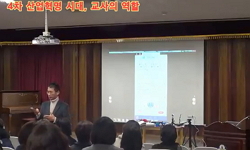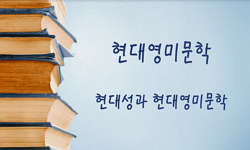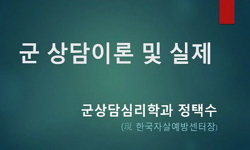The purpose of this study is to suggest the role of the teacher in evoking the aesthetic emotions of learners in literature education. For this purpose, the concept of aesthetic emotion in narrative communication was examined with Vygotsky’s Psychol...
http://chineseinput.net/에서 pinyin(병음)방식으로 중국어를 변환할 수 있습니다.
변환된 중국어를 복사하여 사용하시면 됩니다.
- 中文 을 입력하시려면 zhongwen을 입력하시고 space를누르시면됩니다.
- 北京 을 입력하시려면 beijing을 입력하시고 space를 누르시면 됩니다.

학습자의 심미적 정서 유발을 위한 교사의 역할 - 비고츠키(Vygotsky) 예술심리학을 중심으로 - = The role of teachers to evoke aesthetic emotions in learners -Focused on Vygotsky’s Psychology of Art-
한글로보기https://www.riss.kr/link?id=A108342160
-
저자
김정은 (서울송전초등학교)

- 발행기관
- 학술지명
- 권호사항
-
발행연도
2022
-
작성언어
Korean
-
주제어
문학교육 ; 학습자의 정서 ; 심미적 정서 ; 비고츠키 ; 예술심리학 ; 교사의 역할 ; 언어적 조력 ; Literary Education ; Learner’s Emotion ; Aesthetic Emotion ; Vygotsky ; Psychology of Art ; Teacher’s Role ; Linguistic Assistance.
-
등재정보
KCI등재
-
자료형태
학술저널
-
수록면
77-99(23쪽)
- 제공처
-
0
상세조회 -
0
다운로드
부가정보
다국어 초록 (Multilingual Abstract)
As a result, aesthetic emotions arise when the emotions arising from the materials and forms of art cause conflicts and contradictions with each other. It is a state of transformation (catharsis) into a new state of emotion that has not been experienced at the previous level of consciousness. It is the driving force and higher mental function to expand the existing perception and perception in a broader and deeper way than before.
Teachers should help children’s readers to recognize the emotions arising from the materials and forms of children’s and youth literature by dynamically interacting with the text. Teachers can use points of conflict between ① the event and the style, ② the event and the narrator’s voice, and ③ the character and the narrator’s voice. In order to induce the learner’s aesthetic emotions, first, the teacher should guide the learner to easily understand the confrontation of the elements involved in the point of contradiction and conflict. Second, at the point where the materials and forms of literary works contradict each other, it is necessary to provide a linguistic stimulus to maximize and feel the opposing effects of the forms. Third, teachers should provide various linguistic assistance including their own thinking processes so that the unconsciously formed emotions in the process of constructing new thoughts and emotions through emotional conflict are materialized in the learners’ consciousness.
The purpose of this study is to suggest the role of the teacher in evoking the aesthetic emotions of learners in literature education. For this purpose, the concept of aesthetic emotion in narrative communication was examined with Vygotsky’s Psychology of Art, and the necessity of literary education was confirmed in the process of developing the aesthetic emotion of children’s readers. This study looked at the origin of aesthetic emotions in children’s and youth literature works and further explored the role of teachers to evoke learners’ ‘aesthetic emotions’.
As a result, aesthetic emotions arise when the emotions arising from the materials and forms of art cause conflicts and contradictions with each other. It is a state of transformation (catharsis) into a new state of emotion that has not been experienced at the previous level of consciousness. It is the driving force and higher mental function to expand the existing perception and perception in a broader and deeper way than before.
Teachers should help children’s readers to recognize the emotions arising from the materials and forms of children’s and youth literature by dynamically interacting with the text. Teachers can use points of conflict between ① the event and the style, ② the event and the narrator’s voice, and ③ the character and the narrator’s voice. In order to induce the learner’s aesthetic emotions, first, the teacher should guide the learner to easily understand the confrontation of the elements involved in the point of contradiction and conflict. Second, at the point where the materials and forms of literary works contradict each other, it is necessary to provide a linguistic stimulus to maximize and feel the opposing effects of the forms. Third, teachers should provide various linguistic assistance including their own thinking processes so that the unconsciously formed emotions in the process of constructing new thoughts and emotions through emotional conflict are materialized in the learners’ consciousness.
국문 초록 (Abstract)
심미적 정서란 예술의 재료와 형식에서 발생하는 정서가 서로 갈등과 모순을 일으킴으로써 발생한다. 이전의 의식 수준에서 경험하지 못했던 새로운 상태의 정서로 변모된 상태(카타르시스)이다. 기존의 지각과 인식을 이전보다 폭넓고 깊이 있게 확장해 나가게 하는 동력이자 고등정신기능이다.
교사는 아동독자가 텍스트와 역동적으로 상호작용함으로써 아동⋅청소년문학 작품의 재료와 형식에서 비롯되는 정서를 인식할 수 있도록 ① 사건과 문체 ② 사건과 서술자의 목소리 ③ 인물과 서술자의 목소리 사이의 갈등 지점을 활용할 수 있다. 학습자의 심미적 정서를 유발하기 위해 교사는 첫째, 모순과 갈등의 지점에 관여하는 요소들의 대립을 학습자가 쉽게 이해할 수 있도록 안내해야 한다. 둘째, 문학작품의 재료와 형식이 모순되는 지점에서 형식이 유발하는 상반된 효과를 극대화하여 느낄 수 있도록 하는 언어적 자극을 제공해야 한다. 셋째, 정서적 갈등을 통해 새로운 사유와 정서를 구성하는 과정에서 무의식적으로 형성된 정서가 학습자의 의식에 구체화되도록 교사는 자신의 사고 과정을 비롯한 다양한 언어적 조력을 제공해야 한다.
이 연구는 문학교육에서 학습자의 심미적 정서 유발을 위한 교사의 역할을 제시하는 데 목적이 있다. 이를 위하여 비고츠키의 예술심리학을 중심으로 서사 소통에서 심미적 정서의 개념을 ...
이 연구는 문학교육에서 학습자의 심미적 정서 유발을 위한 교사의 역할을 제시하는 데 목적이 있다. 이를 위하여 비고츠키의 예술심리학을 중심으로 서사 소통에서 심미적 정서의 개념을 고찰하고 아동독자의 심미적 정서 발생 과정에서 문학교육의 필요성 을 확인하였다. 또한 아동⋅청소년문학 작품에서 심미적 정서의 발생 지점을 살펴보고 나아가 학습자의 ‘심미적 정서’를 유발하기 위한 교사의 역할을 언어적 조력의 측면에서 모색해보았다.
심미적 정서란 예술의 재료와 형식에서 발생하는 정서가 서로 갈등과 모순을 일으킴으로써 발생한다. 이전의 의식 수준에서 경험하지 못했던 새로운 상태의 정서로 변모된 상태(카타르시스)이다. 기존의 지각과 인식을 이전보다 폭넓고 깊이 있게 확장해 나가게 하는 동력이자 고등정신기능이다.
교사는 아동독자가 텍스트와 역동적으로 상호작용함으로써 아동⋅청소년문학 작품의 재료와 형식에서 비롯되는 정서를 인식할 수 있도록 ① 사건과 문체 ② 사건과 서술자의 목소리 ③ 인물과 서술자의 목소리 사이의 갈등 지점을 활용할 수 있다. 학습자의 심미적 정서를 유발하기 위해 교사는 첫째, 모순과 갈등의 지점에 관여하는 요소들의 대립을 학습자가 쉽게 이해할 수 있도록 안내해야 한다. 둘째, 문학작품의 재료와 형식이 모순되는 지점에서 형식이 유발하는 상반된 효과를 극대화하여 느낄 수 있도록 하는 언어적 자극을 제공해야 한다. 셋째, 정서적 갈등을 통해 새로운 사유와 정서를 구성하는 과정에서 무의식적으로 형성된 정서가 학습자의 의식에 구체화되도록 교사는 자신의 사고 과정을 비롯한 다양한 언어적 조력을 제공해야 한다.
1 崔之賢, "한국근대시 정서체험의 텍스트조건 연구" 서울大學校 大學院 1997
2 진선희, "학습 독자의 시적 체험 특성에 따른 시 읽기 교육 내용 설계 연구" 한국교원대학교 대학원 2006
3 김태호, "제후의 선택" 문학동네 2016
4 김성룡, "정서(情緖)와 문학교육" 한국고전문학교육학회 (20) : 5-32, 2010
5 방은수, "정서 조정을 위한 극적 체험 교육 연구 -서사적 상상력을 중심으로-" 한국국어교육학회 (117) : 55-81, 2018
6 고정희, "정서 교육을 위한 예비적 고찰 -고문헌에 나타난 ‘정서(情緖)’ 개념을 중심으로-" 한국고전문학교육학회 (20) : 33-66, 2010
7 구병모, "위저드 베이커리" 창비 2009
8 조희숙, "아동문학의 미학적 접근" 교문사 2009
9 박현진, "심미적 정서와 도덕교육 - 비고츠키 예술심리학을 중심으로-" 한국초등도덕교육학회 (33) : 285-310, 2010
1 崔之賢, "한국근대시 정서체험의 텍스트조건 연구" 서울大學校 大學院 1997
2 진선희, "학습 독자의 시적 체험 특성에 따른 시 읽기 교육 내용 설계 연구" 한국교원대학교 대학원 2006
3 김태호, "제후의 선택" 문학동네 2016
4 김성룡, "정서(情緖)와 문학교육" 한국고전문학교육학회 (20) : 5-32, 2010
5 방은수, "정서 조정을 위한 극적 체험 교육 연구 -서사적 상상력을 중심으로-" 한국국어교육학회 (117) : 55-81, 2018
6 고정희, "정서 교육을 위한 예비적 고찰 -고문헌에 나타난 ‘정서(情緖)’ 개념을 중심으로-" 한국고전문학교육학회 (20) : 33-66, 2010
7 구병모, "위저드 베이커리" 창비 2009
8 조희숙, "아동문학의 미학적 접근" 교문사 2009
9 박현진, "심미적 정서와 도덕교육 - 비고츠키 예술심리학을 중심으로-" 한국초등도덕교육학회 (33) : 285-310, 2010
10 민재원, "시 읽기 교육에서 정서 체험의 구조와 작용 연구" 서울대학교 대학원 2013
11 한용환, "소설학사전" 문예출판사 1999
12 김경희, "사자왕 형제의 모험" 창비 2015
13 주요섭, "사랑방 손님과 어머니" 어문각 1994
14 강진우, "비고츠키의 예술 심리학" 연극과 인간 2017
15 박현진, "비고츠키 예술심리학의 도덕교육학적 해석" 한국교원대학교 대학원 2009
16 강진우, "비고츠키 『예술심리학』에서의 <햄릿> 읽기- 카타르시스와 극적 상상력 교육 -" 한국연극학회 1 (1): 81-114, 2013
17 조준래, "브이곳스끼의 예술심리학에서 카타르시스의 개념" 한국슬라브․유라시아학회 21 (21): 171-198, 2006
18 염창권, "미적 정서의 특성과 문학교육적 함의" 한국초등국어교육학회 (36) : 301-334, 2008
19 강서희, "문학교육에서 학습독자의 정서 성찰을 통한 윤리적 가치 함양 교육 방안 연구" 청람어문교육학회 (83) : 293-315, 2021
20 박치범, "문학 교과서가 학습자의 정서를 다루는 방식에 관한 비판적 고찰 - 2009개정 국어와 문학 교과서를 중심으로 -" 한국문학교육학회 (51) : 109-154, 2016
21 정희옥, "마인드 인 소사이어티" 학이시습 2009
22 이지호, "동화의 환상과 현실" 열린어린이 2017
23 이호, "담화의 허구" University of Toronto Press 2004
24 고정희, "고전시가 교육의 탐구" 소명출판 2013
25 모영화, "감정을 넘어 공감으로 - 독자의 감정적 반응에 주목하는 소설 교육" 우리말교육현장학회 13 (13): 87-114, 2019
26 김순규, "감정 형상화를 통한 감성 소통의 방법에 관한 연구" 한국아동문학학회 (19) : 187-219, 2010
27 민경환, "Vygotsky의 ‘예술심리학’" 한국심리학회 219-228, 1992
동일학술지(권/호) 다른 논문
-
초등학교 저학년 수학 교과서 지시문의 표현에 대한 비판적 고찰 - 2학년을 중심으로 -
- 한국초등국어교육학회
- 안부영
- 2022
- KCI등재
-
- 한국초등국어교육학회
- 천효정
- 2022
- KCI등재
-
- 한국초등국어교육학회
- 김도남
- 2022
- KCI등재
-
현대 그림책의 다중양식성과 교육 방법 - 롤랑 바르트의 코드 해석 관점을 중심으로 -
- 한국초등국어교육학회
- 이향근
- 2022
- KCI등재




 KCI
KCI KISS
KISS







